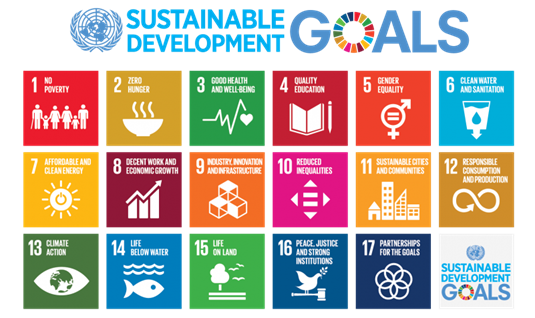Background:
The Sustainable Development Goals (SDGs) are a set of 17 global objectives adopted by the United Nations in 2015 under the 2030 Agenda for Sustainable Development. Based on the Millennium Development Goals (MDGs), SDGs aim to tackle pressing global issues like climate change and environmental degradation.
Context: In September 2023, India hosted a G20 summit that promoted full and effective implementation of the SDGs. In the same month, the UN held an “SDG Summit” and a “Summit of the Future” to follow up and review the progress of SDG goals.
Relevance: GS2 (Social Justice)
Practice question: Explain the complex interlinkages between human development and sustainable development. Suggest measures for India to enhance progress towards the SDGs while simultaneously improving the human development index (HDI). (250 words)

Amartya Sen’s capability approach and human development:
Nobel laureate Amartya Sen’s “capability approach” evaluates human development based on the importance of freedom and opportunities rather than mere income and utility.
India and UNDP’s HDI 2023/2024:
- India ranked 134th out of 193 countries. Categorises India as a medium human developed country. HDI scores increased from 0.434 in 1990 to 0.644 in 2022, an increase of 48.4%. Sri Lanka (78), China (75), Bhutan (125), and Bangladesh (129) scored above India.
- India’s slow growth: From 2015 to 2022, countries improved their rank significantly, e.g., China improved 18 ranks. During this phase, India improved only four ranks.
Relationship between SDGs and HDI:
The Human Development Index (HDI) developed by the UNDP, measures three dimensions:
- Long and Healthy Life: Life expectancy at birth.
- Knowledge: expected years of schooling and mean years of schooling.
- Decent Standard of Living: Income per capita.
These dimensions align with key SDGs:
- SDG-3 (Good Health)
- SDG-4 (Quality Education)
- SDG-5 (Gender Equality)
- SDG-8 (Decent Work)
- SDG-10 (Reduced Inequality)
- From the above relationship, it is very evident that sustainable development is not separate from human development.
Gender gaps:
- Gender Development Index (GDI): The Human Development Report also presents the Gender Development Index considering gender inequality in 193 countries. HDI values are calculated separately for women and men. The ratio of the GDI values closer to 1, represents smaller gender gaps.
GDI and India:
- Among the 42 medium-human development countries, only seven have more than a 10% deviation in gender parity. Unfortunately, India is one of those seven countries.
- For instance, India’s Gender Development Index (GDI) value is 0.852, indicating significant gender disparity. There is more than a 10% difference between the Human Development Index (HDI) values for men and women in India. Specifically, women’s HDI value is 0.582, while men’s HDI value is 0.684.
Labour force participation rate (LFPR):
- India has one of the largest gender gaps in LFPR, with a 47.8 percentage point difference between women (28.3%) and men (76.1%). In comparison, neighbouring countries are performing better, with China at 53.6%, Bhutan at 53.5%, and Bangladesh at 39.2%.
- Periodic Labour Force Survey (PLFS) -2022-23:Published by the Ministry of Statistics and Program Implementation (MoSPI), 37% of females of working age (15 years and older) were in the labour force in 2022–23, an increase from 23.3% in 2017–18.
- Urban-rural disparity: The female labour force participation rate in rural areas increased from 24.6% in 2017-18 to 41.5% in 2022-23, while there was only a marginal increase in urban areas from 20.4% to 25.4%.
Income equality:
- Along with the gender gap, there is a rise in income inequality. India’s income inequality is 21.7%, in comparison to Bangladesh (11.6%), China (15.7%), Bhutan (18.1%), and Nepal (9.7%).
- India has higher income inequality compared to the world average of 17.5% and other regional groups like Europe and Central Asia (15.7%).
Key Initiatives :
SDG-3 (Good Health)
- Ayushman Bharat: The world’s largest healthcare program providing free health coverage to low-income families.
- National Health Mission (NHM)
SDG-4 (Quality Education)
- Rashtriya Madhyamik Shiksha Abhiyan (RMSA): Enhances access to secondary education.
- Mid-Day Meal Scheme: Improves nutrition and attendance in schools.
SDG-5 (Gender Equality)
- Beti Bachao Beti Padhao (BBBP)
- Mahila Shakti Kendra
- Ujjwala Yojana: Provides free LPG connections to women from below-poverty line households.
SDG-8 (Decent Work)
- Pradhan Mantri Mudra Yojana (PMMY): Provides microfinance to small businesses.
- Skill India Mission: Enhances skill development and training.
- Mahatma Gandhi National Rural Employment Guarantee Act (MGNREGA): Guarantees 100 days of wage employment.
SDG-10 (Reduced Inequality)
- Pradhan Mantri Jan Dhan Yojana (PMJDY): Promotes financial inclusion with access to banking services.
- Pradhan Mantri Awas Yojana: Ensures access to housing for economically weaker sections.
Conclusion:
India needs to adopt a multifaceted approach to address income inequality, gender gaps, and labour force participation by promoting skill development and implementing targeted initiatives. By ensuring fair opportunities and equal access to resources, the country can move toward sustainable and inclusive development.



